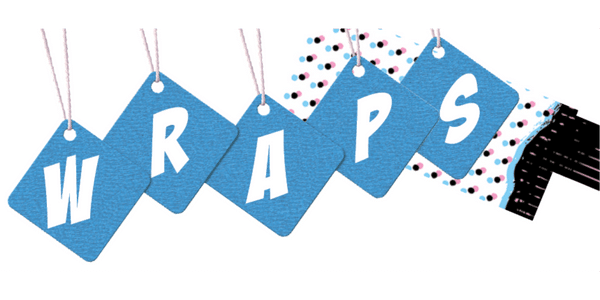Executive development is no longer a bonus for years of service but a requirement to help talent reach their potential when the need arises. This statement implies that, while development may still partially be a recognition, it is based on meritocracy and not time served. Executive development cannot be based on tenure, i.e., ‘We will only give you a development opportunity after you’ve worked here for ten years.’
Nor can development be correlated with age, since reinvention of one’s career will occur more prevalently. So we cannot assume, for example, that a junior professional development initiative is going to be relevant only for twenty-somethings. An organisation will have ever more fifty and sixty-plus-year-olds who are starting new careers, as longer lives means more frequent reinvention.
These changing trends have led me to draw at least two conclusions regarding how to think about development. First, rather than few and infrequent, organisations must offer many development opportunities and as often as feasible. However, these initiatives do not have to be expensive. Second, because we will increasingly observe career reinvention at any age, development should not be correlated with age or even stage.
While we’re exploring old beliefs about development, we must also note the good news that some of the most desirable options for our youngest employees today are inexpensive, in fact, often free, and represent win-wins for employees and employers. Let’s explore these options within a simple “wrap,” or specifically with the acronym:
WRAPS
-
Work-life balance
-
Reverse mentoring
-
Alumni network
-
Projects
-
Side hustles
The W of WRAPS: Work-life balance
Work-life balance is a charged term because there is an interpretation problem, semantic discord between the generations. After conducting dozens of interviews and cross-referencing with other findings, I have heard the same miscommunication over and over again.
When Gen Ys (Millennials) ask for work-life balance, they’re typically making a where request, asking to work wherever since technology allows them to do so in so many industries and functions. They are challenging the fruitless work concept of “face time,” where the employee may only leave after the boss does, where they are evaluated based on their visible hours at the mast instead of on the merit of their work.
Gen Xs and Boomers hear “work-life balance” as a when request, a desire for fewer hours, a sign of disrespect for their older colleagues, a refusal to pay one’s dues. Hence, we don’t make progress because we’re speaking at cross-purposes.
Does the trend away from face time mean that companies will be less productive or successful?
No. The death of face time as a proxy for productivity is long overdue. Enforcing face time also harms productivity in the workplace in that it perversely incentivises employees to slow down, to be less efficient.
A number of experiments in the laboratory and in online studies gave research subjects typing tasks that took much less time than the period allotted, but the subjects who finished early had to wait idly until their time expired. As you might expect, once subjects knew this, they intentionally slowed their typing. This is known as the ‘dead time effect’ as opposed to the ‘deadline effect’ where one speeds up as a deadline approaches.
If we consider the implications for the office, the dead time effect would imply that workers in a face time culture both slow their labour and hide that fact from their bosses because it’s in their interest to do so. They’re maximising their personal return if they have to play the face time game.
If organisations want the quality of those work hours to be as high as possible, then some flexibility in allowing for replenishment and renewal of energy, physical and mental wellness, personal development, leisure and family cannot but help.
As one Head of Learning and Development at a large recruiting company reasoned, ‘Our [Gen Ys] are as ambitious and committed to their careers as other generations, but they also hold a place for other people in their lives. This affects how they want to work… If we cannot change to cater to them, we will lose more and more talent.’
Is there scope for that flexibility to be abused? Yes, of course, but among my interviews of Gen Ys, their managers, and in my own managerial experience, I very rarely encountered an example of someone abusing the system. In fact, I frequently encountered the opposite scenario, that when granted more freedom to work wherever one wishes at least some of the time, most Gen Ys work more hours and feel less exploited, as there is more personal choice and discretionary time. Certainly, they have more time in their waking hours for work versus commuting!
Most managers who resist flexible working do so for two reasons. First, inertia: ‘This is the way we’ve always worked and organised ourselves.’ Second, paying dues: ‘I worked at my desk for umpteen hours a week, never leaving until after the boss did when I was your age. So should you!’ We may conclude, therefore, that the primary obstacle to flexibility is not a complex operational barrier but a cultural one.
Embedding greater work-life balance may also open learning opportunities in that it allows more space for people to choose what, how and when they will develop themselves. Work-life balance creates the opportunity for development to occur in the first place; it is the foundation from which ‘development’ can manifest in new, personal and unexpected ways that are fulfilling, energising and even idiosyncratic to each colleague in a rich ecosystem of diverse learning that will benefit the company in ways that human resources could not anticipate after even the most thorough strategic planning.
The R of WRAPS: Reverse mentoring
Companies can only adapt as quickly as their leaders are personally willing to adapt. I believe we’ve all observed something having to do with old dogs struggling to learn new tricks? Perhaps a way out of this predicament is for companies to stop assuming that learning only goes one way – down the hierarchy. Senior executives typically have a lot to learn about the changing face of corporate life, what their employees expect of them, and what their newest customers may want now. Having the humility to allow themselves to be ‘mentored’ by their youngest employees on these themes can yield tremendous advantages, especially accelerating an organisation’s pace of learning.
The typical fifty-something manager of today has seen it all in the context of one or two companies and industries, but their twenty-five-year-old employees may already have experienced four to five organisations and industries in the span of their own short careers! There has never been a better time for companies to enact reverse mentoring programmes, whereby a young colleague “mentors” an older one – to tap into their own wisdom and perspective rather than dismiss that rich knowledge because of the age of its source.
What does successful reverse mentoring look like?
To begin with, it requires a commitment by both parties. Rank and hierarchy must be abandoned for the duration of all reverse mentoring conversations or else the reverse mentor will never be forthright for fear of sabotaging their career. The mentee’s promise should explicitly include the promise to seek to understand rather than to slip into ‘teaching’ the mentor or convincing them of the folly of their views.
Furthermore, embarking on the reverse mentoring should be recognised by the organisation as a voluntary development initiative undertaken by both parties, a subscription to their personal growth that enhances their own empathy and neuroplasticity (or learning agility). The strongest mentoring relationships are bilateral: the senior executive mentors the Gen Yer on their career or perhaps organisational understanding, and the Yer mentors the executive on any range of current issues, such as social media, technology, or even what motivates them.
There should be an agreed number of conversations, after which both parties should assess if the objective(s) has been achieved. If so, why? If not, why not? In so doing, the mentor pair avoids any misunderstanding or misalignment of what they are setting out to achieve and how.
The A of WRAPS: Alumni network
If employees are most probably not going to work for one organisation for their entire careers, how can companies embrace that reality and still create win-wins?
We can learn a great deal from many of the most prominent professional services firms, such as McKinsey and Accenture, who cultivate strong alumni communities among their former employees. In doing so, the firms cultivate loyal future clients and increase the possibility of having some of their alumni return to work for their consulting companies a second or even third time with all the enhanced development, experience and leadership lessons that these alumni have acquired and without the firms having to pay for those!
If there’s a clear advantage for employers, there is certainly also a benefit for former employees, particularly those who leave to become freelancers. The alumni network from their former company provides a community, sometimes even a physical place to which to return.
As social animals, we seek our tribes for like-minded peers, for different and stimulating thinking and discussion, for role models, for inspiration. Without these networks, the self-employed are at even greater risk of the loneliness epidemic that some researchers report is hitting the workplace. Playing in the gig economy might then be about finding balance between predictability and possibility, viability (knowing where your next cheque is coming from) and vitality (able to feel authentic in your own brand).
The P of WRAPS: Projects
Every Gen Y I have interviewed at some point emphasised that they craved ever-more challenging and senior responsibilities. When I asked if that meant that they expected regular promotions, they vigorously replied ‘no’.
The most common description I heard of a challenging responsibility was a project, which could be any professional experience that both stimulated the individual, gave them more senior access to colleagues or customers, a greater influence in decision making, and ideally an activity that helped them ‘badge’ their resumes.
When I asked for examples of projects, what struck me most was how simple and inexpensive most of these are:
- Secondments or temporary roles in other functions, departments or offices;
- International placements;
- Shadowing roles to which the employee aspires;
- Mentoring by the role models in the organisation;
- Coaching to enhance self-awareness, effectiveness in-role and readiness for the next position;
- More senior client, customer, organisational design, product or service development projects.
- Given the cost of recruiting top talent, the return on such meagre investment is impressive if it contributes to attracting and keeping one’s stars.
The S of WRAPS: Side hustles
Many Gen Ys see their careers more as a series of potential wanderings instead of linear paths. What better way to have career insurance than to cultivate career options through side hustles, and to nurture them before those options are required, rather than desperate, convulsive, real-time reinvention? Rather than think of these endeavors as distractions, companies can choose to interpret them as opportunities for professional development and to enhance engagement.
In addition, any of these activities may become opportunities for the company itself: entrepreneurial ventures, product prototypes, and social responsibility initiatives. Historically, personal passion projects developed outside of the day job have yielded massive new products for employers, including WL Gore’s guitar strings, Intuit’s SnapTax and Google’s Gmail.
Should the company decide to back any of these side hustles, they also create future managerial roles and upside for the people who founded them. For example, Nokia offers grants of up to twenty-five thousand Euros plus coaching and mentoring for promising business plans that their employees devise, but Nokia does not take a stake in these businesses. The ultimate purpose of knowingly tolerating, or even nurturing, the side hustle is simply to encourage innovation and agility.
Once a critical mass of employees is pursuing their passions outside of the strict parameters of role definitions, the organisation has de facto built adaptability, creativity and a culture of prototyping into its DNA, as personal initiatives are continuously conceived, fostered, killed or evolved. However creative you think your colleagues are, if they don’t have the chance to pursue something that is not mission-critical, most of their creative capacity will go unexploited.
If you don’t create room for aspiring entrepreneurs inside your organisation, they’ll simply leave and compete with you from outside. And unfortunately, it’s almost a maxim that start-ups disrupt the stalwarts more than the other way around. Why? Start-ups have the hunger and the tolerance to give innovation free reign.
I hope that you will share and apply WRAPS in your team or organisation. My own conversations with those in the business world, both younger and older, have built my confidence that WRAPS is a simple and easily applicable framework to enhance development that works for all parties.







